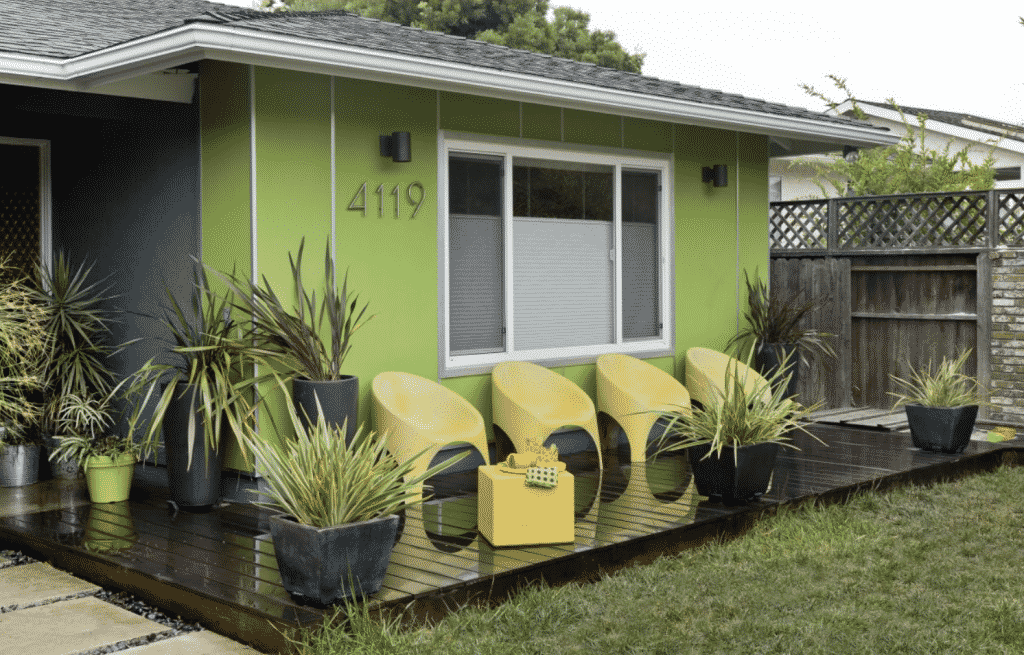The exterior of your home is the first place people notice when they arrive at your residence. For home buyers, the condition of your home from the outside significantly influences their interest (or lack of).
Exterior paint is one of the things that potential homebuyers are quick to use when gauging the value of your home. Even with a magnificently-looking interior, your home’s asking price will be lower if the exterior walls are not as appealing.
So, if the weather has wreaked havoc on your exterior walls or you just want to make your home’s exterior more attractive, painting will help spruce it up. But before you purchase gallons of exterior house paint, here are things you should know.
Know the Difference between Interior and Exterior House Paint
Paint is not just paint!
Surprisingly, many people do not know the difference between Interior and Exterior paint. A homeowner walking into a shop and not specifying whether the paint is for interior or exterior surfaces is quite common. They will pick their color and leave.
For a successful paint job, you need to pick paint manufactured specifically for the outdoors. These two types of paint differ in their chemical composition: mainly the additives and raisins.
Exterior paint contains heavy-duty additives that allow it to withstand harsh climatic conditions. They will not fade as fast. For this reason, picking the right outdoor paint color cannot be underestimated.
1. Go for Quality
Now that you realize the importance of picking paint designed for the exteriors, you need to choose a high quality paint.
Various paint manufacturers exist, and each of them has a unique way they make their paint. For this reason, paints come in varying qualities.
Every manufacturer will be quick to label their product ‘top-quality.’ To ensure you go home with durable exterior paint, be on the lookout for features such as UV protection, stain, mold, and fade resistance. If the paint offers all-in-one protection, inclusive of the primer, the better it is.
Information about the paint’s durability is mostly written on the paint’s tin. If not, you can always look for more information on your preferred exterior paint on the internet or from your vendor.
2. You Need A Different Paint Color for the Door
How absurd is it to paint the whole exterior of your house, inclusive of doors and windows, the same color?
Forget water and light features. The door should be the focal point of your home’s outdoors. It is an entryway asset that should elevate the curb appeal of your house. For this reason, it is essential to have a distinct color for your door and windows; a color that breaks the monotony.
As such, when purchasing exterior house paint, remember to get a different color for the door. Get a color that complements your outdoors but is striking enough to grab your attention.
3. Pick the Colors Wisely
The whole essence of painting your exterior walls is to improve your home’s aesthetics. As such, you must pick aesthetically appealing colors.
Picking the right color is a challenge to many. However, to make the process less overwhelming, you need to do a little digging.
Consider looking for paint color ideas on lifestyle blogs and magazines. These are particularly resourceful as they are mostly based on the views of experts. Also, look for inspiration from your yard. Take into account the various features in your back and front yard to ensure you decide on a color that complements all these elements.
What about driving around your neighborhood?
Getting to see the different color combinations in other people’s residences might be what triggers an inspiration that is ideal for your home.
4. Sample Before Painting
This is one of the most critical steps to consider before starting an exterior painting project. Skipping this step might be what hinders you from achieving your desired color.
Once you have a color or colors of choice in mind, buy a small quantity, for starters. Apply it on the exterior walls, preferably in the backyard. Check how the color turns out and see how natural and artificial lighting affects it. Be sure to check it in the morning, afternoon, and afternoon. Doing so will save you from buying gallons of paint that you don’t like.
5. Stick to 2 or 3 Colors
As excited as you are about a brand new look for your walls, do not experiment with a ton of colors. Veer away from the temptation of using more than three colors.
Have one main color and you can choose one or two other colors at most to accentuate your home. With less color on your home’s exterior, features and other decorative pieces around the exterior will stand out.
